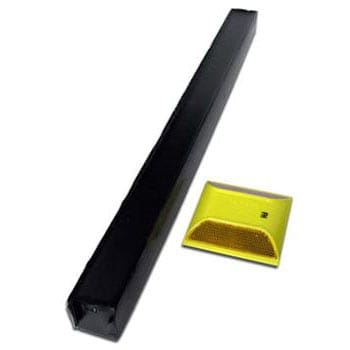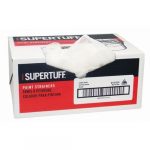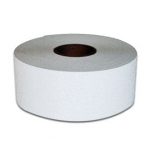CALL TODAY 1.800.321.1751
Bitumen Quick Stick
Bitumen Sticks offer a fast and easy way to adhere pavement markers or do small crack repairs. The only tool required is a small torch. Peal back the self release cardboard box and melt just enough to do the job.
Description
- Packaged in a self-release cardboard box.
- Can be melted using a hand torch, negating the need for heavy-duty equipment.
- “Traffic ready” after five minutes of drying time.
Product Description
Want the strength of bitumen adhesive but none of the mess? Quick Sticks are the answer!
Bitumen Quick Sticks don’t require any mixing or heavy machinery. Simply take the stick and melt a small portion off of the end using a hand torch or other heat source. Only liquefy what you need, and keep the rest of the material in a solid, easy-to-store and transport form. Bitumen-based adhesive is suitable for use on concrete, asphalt, and other paved surfaces.
Estimated application rates for this product are:
• 2 ½ inch by 4 ½ inch Rectangular Marker – 30 uses per stick.
• 4-inch Round/Square Marker – 20 uses per stick.
• 8-inch Round Marker – 6 uses per stick.
• 8-inch Safe-Hit Base Marker – 6 uses per stick.
Individual results may vary.
How to Use
Bitumen should be installed on clean, dry pavement when surface temperature is at least 50°F. If the desired surface is cooler than 50°F, the manufacturer recommends gently warming it with an open flame or heat lance before attempting installation. Clear the area of dirt and debris prior to application.
Sandblasting or grinding may be necessary to remove oil stains and existing markings.
Bituminous marker adhesive can be re-heated multiple times if necessary; repeated heating will not cause the product to degrade. However, overheating the adhesive may cause it to become stiff, ultimately leading to a weaker bond between the traffic marker and the chosen surface.
Please exercise caution when using this—or any other—heat-applied material. Direct exposure to heated bitumen can cause burns and other injuries, while inhaling fumes can lead to respiratory distress, nausea, and headaches. Always wear appropriate safety equipment and work in a well-ventilated area.
You must be logged in to post a review.










Reviews
There are no reviews yet.